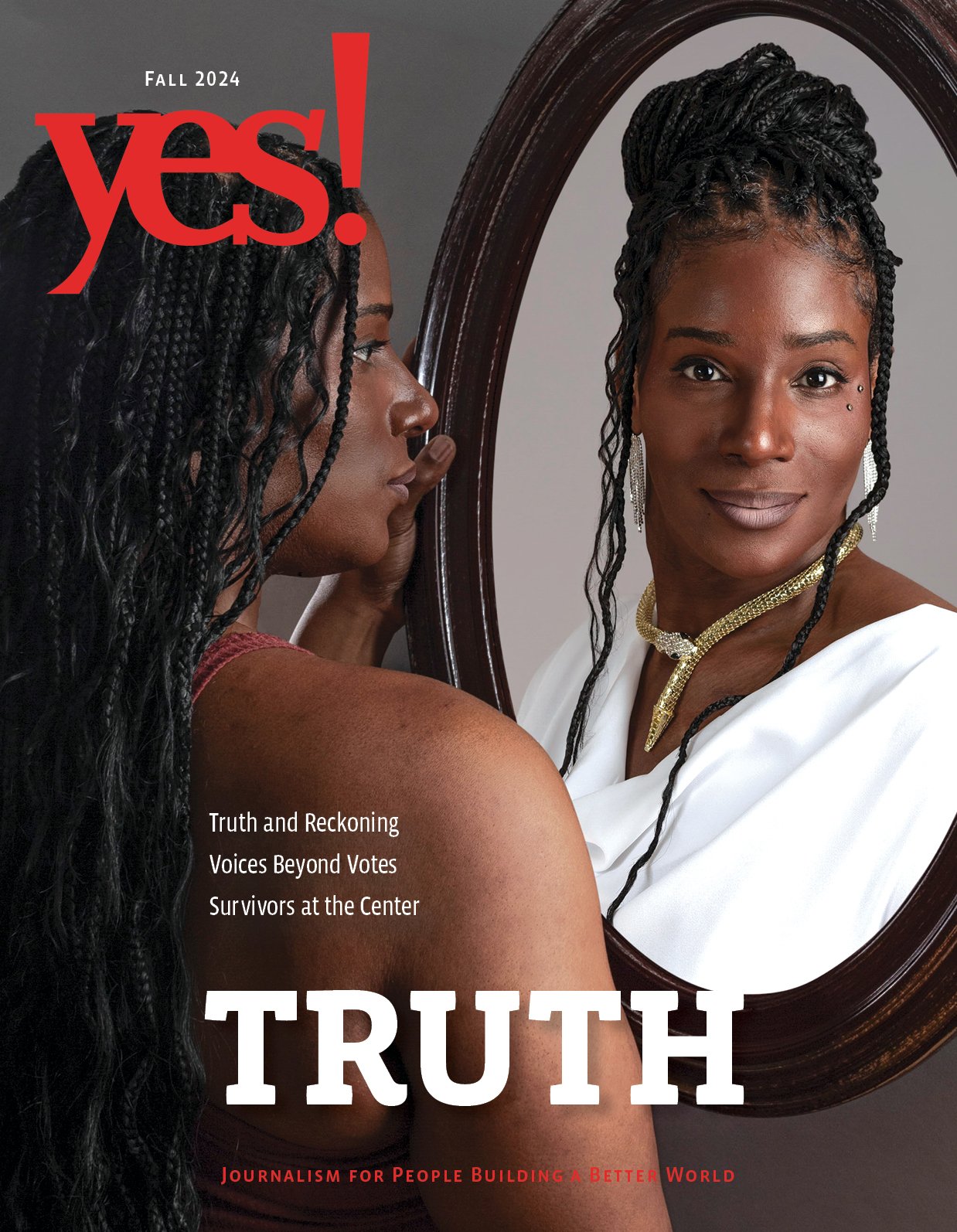
#MeToo may seem like a heavy topic to unpack and discuss with students because it feels complex and uncomfortable, yet this issue impacts everyone.
Thoughtfully talking about these controversial topics also cultivates critical thinking.
This month’s “Let’s Talk About” feature explores the #MeToo movement and sexual harassment. With YES! stories and outside resources, plus discussion questions and curriculum, you and your students will learn about this topic from multiple angles.
In the end, we hope that this discussion will help students reflect on how students, staff, and administration treat each other in their school community. What does a school based on respect and dignity look like?
This is our second collection. We will post a new collection on a different topic on the first Thursday of each month.
If you have ideas you’d like to share with other teachers or want to tell us how we could make this collection better, please share your thoughts in the comment section at the end of the article.
How to Use This Collection
Suggested below are steps to a thoughtful and meaningful discussion with your students about the #MeToo movement—plus issues of sexual harassment and gender stereotypes. Choose what is appropriate for your class.
1. Students complete a pre-survey (optional).
2. Choose at least one YES! article and one outside article for a robust compare and contrast.
3. Use the discussion questions—or craft your own—to gauge your students’ understanding and opinions.
4. Students complete a post survey (optional).
5. Explore curriculum if you’d like to dive deeper.
Reading Materials
YES! Articles
Why Being a Good Guy Is Not Enough
Preventing Sexual Harassment Begins in Early Childhood
I Can’t Hate Keillor and Lauer If I Want to End the Patriarchy
Outside Articles
TIME Person of the Year 2017: The Silence Breakers (TIME Magazine)
Sexual harassment 101: what everyone needs to know (The Guardian)
Men paralyzed by #MeToo: Here’s why you need to speak up—and how (Quartz)
Discussion Questions
No doubt, there is lots to discuss about the #MeToo movement and the wave of sexual harassment and assault stories in the entertainment industry and in politics. Introductory questions to start a conversation are in the pre-and post-surveys. Here are a few questions to help you dive deeper into #MeToo’s bigger issues—sexual harassment, masculinity, gender stereotypes, abuse of power— and how they impact your students.
1. How are women treated by men today in the workplace? Is it basically the same, or different, than previous decades?
2. Why do you think so many women don’t report their sexual harassment or assault experiences? Why do you think so many women are coming out with their sexual harassment or assault stories now?
3. Does your school have problems with sexual harassment? How can students, teachers, and the administration create an environment where people feel secure they can report sexual harassment (or other forms of harassment) and treat each other with respect?
Curriculum
Discussing sexual harassment with your students in a sensitive, nonpartisan way (PBS)



